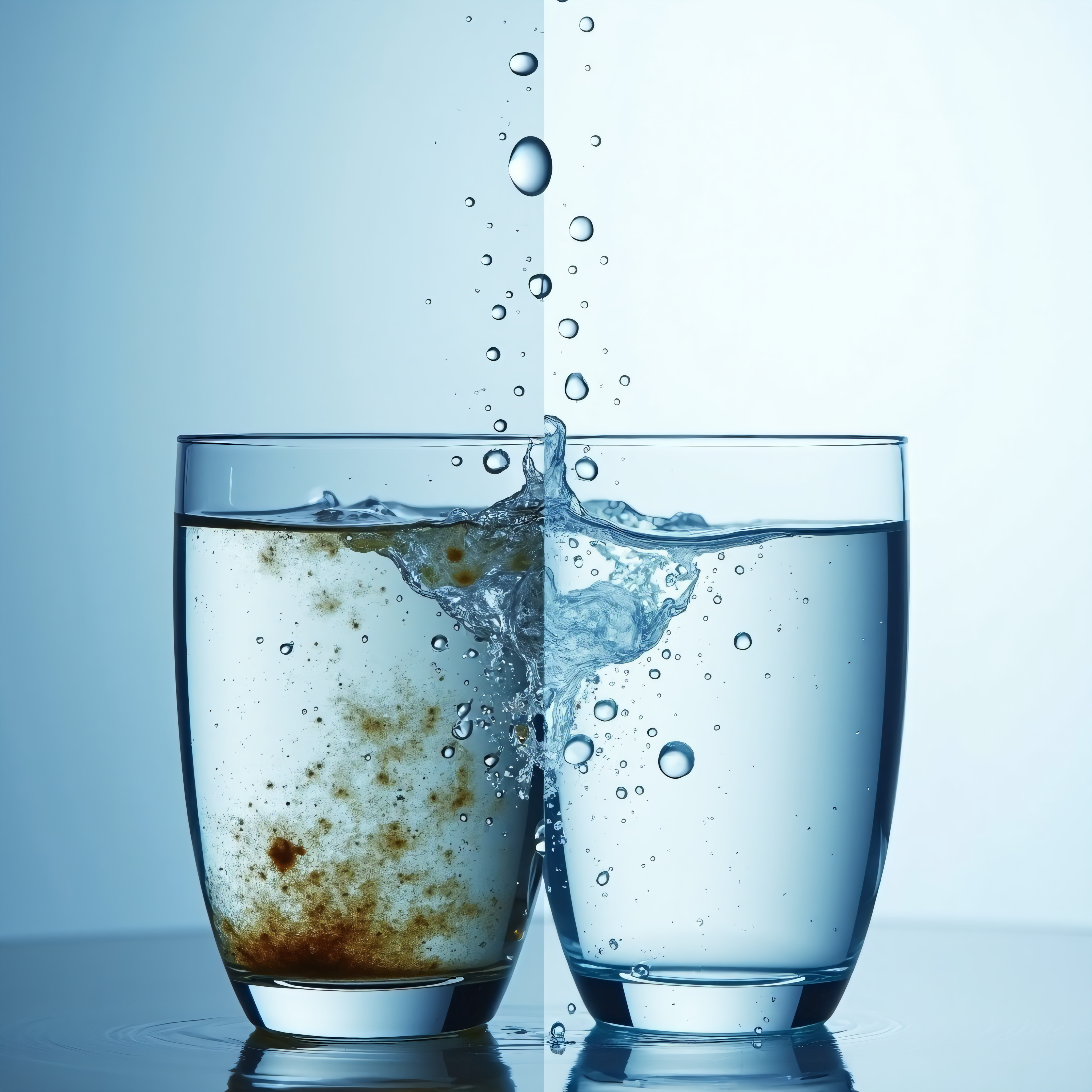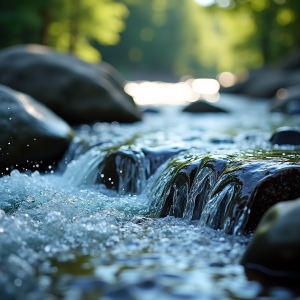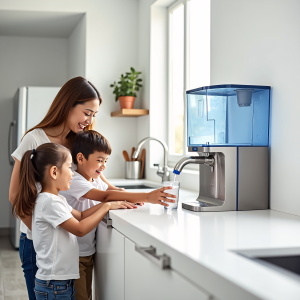estimated reading time: 6 minutes
Why is Water Purification Necessary?
Access to clean, safe drinking water is a fundamental human right, yet billions lack this essential resource. Water contamination, whether from biological sources, chemical pollutants, or physical impurities, poses a significant threat to global health and wellbeing. This comprehensive guide explores the crucial aspects of water purification, delving into various technologies and helping you make informed decisions about protecting your family’s health. We’ll examine popular methods like reverse osmosis (RO) and ultraviolet (UV) purification in detail, comparing their effectiveness and suitability for different situations.
Types of Water Purification Methods: A Detailed Overview
Several methods exist for purifying water, each with its strengths and weaknesses. The choice depends on the specific contaminants present and your budget.
Sediment Filtration: This initial step removes larger particles like sand, silt, and rust using physical barriers. Different filter types exist, including spun polypropylene, pleated, and string-wound filters, each with varying pore sizes and capacities. Sediment filtration is often a pre-treatment step for other purification methods.
Activated Carbon Filtration: This method uses activated carbon, a porous material with a large surface area, to adsorb contaminants. Granular activated carbon (GAC) and carbon block filters are common types. Activated carbon effectively removes chlorine, volatile organic compounds (VOCs), and improves taste and odor.
UV (Ultraviolet) Purification: UV purification utilizes ultraviolet light to inactivate microorganisms by damaging their DNA, rendering them unable to reproduce. It is highly effective against bacteria, viruses, and parasites. However, UV purification does not remove chemicals or sediment; it only addresses biological contaminants. It also requires electricity to operate.
Reverse Osmosis (RO): RO uses pressure to force water through a semi-permeable membrane, removing dissolved solids, heavy metals, and other contaminants. RO is highly effective at removing a wide range of pollutants. However, it is relatively slow, wastes water, and requires electricity.
Distillation: This method involves boiling water and collecting the condensed vapor. Because most contaminants don’t evaporate with water, distillation effectively removes nearly all impurities. However, it is energy-intensive and a slow process.
Water Softening (Ion Exchange): While not strictly a purification method, water softening removes calcium and magnesium ions, preventing scale buildup in pipes and improving the effectiveness of soap [24]. This process typically uses ion exchange resins to replace these hard water ions with sodium ions [25].
| Method | Contaminants Removed | Pros | Cons | Cost (Relative) |
|---|---|---|---|---|
| Sediment Filtration | Sediment, rust, larger particles | Inexpensive, easy to install and maintain | Does not remove dissolved contaminants or microorganisms | Low |
| Activated Carbon | Chlorine, VOCs, taste and odor improvements | Relatively inexpensive, improves taste and odor | Does not remove all contaminants, requires replacement | Low to Medium |
| UV Purification | Bacteria, viruses, parasites | Effective against microorganisms, relatively low maintenance | Doesn’t remove chemicals or sediment, requires electricity | Medium |
| Reverse Osmosis (RO) | Dissolved solids, heavy metals, salts, many chemicals | Removes a wide range of contaminants | Water waste, slow flow rate, requires electricity, higher maintenance cost | High |
| Distillation | Nearly all contaminants | Highly effective purification | Energy-intensive, slow process | High |
| Water Softening | Calcium, magnesium ions | Prevents scale buildup, improves soap performance | Does not remove other contaminants, adds sodium ions | Medium |
Source:UNESdoc
Check out our Blog on The Ultimate Guide to Reverse Osmosis for a Healthier Home.
Check out our Blog on A Deep Dive into UV Water Purification
Check out our Blog on A Comprehensive Guide to Gravity Water Purifiers
RO vs. UV Purification: A Head-to-Head Comparison
Reverse osmosis (RO) and ultraviolet (UV) purification are two popular methods, but they differ significantly in their mechanisms and effectiveness.
RO: RO uses a semi-permeable membrane to physically remove dissolved solids, heavy metals (lead, arsenic, etc.), salts, and many other chemicals. Membrane replacement is necessary periodically, depending on water quality and usage.
UV: UV employs ultraviolet light to kill microorganisms like bacteria and viruses by disrupting their DNA. It is effective against biological contaminants but ineffective against dissolved chemicals. UV systems require regular bulb replacement.
| Feature | RO | UV |
|---|---|---|
| Mechanism | Membrane filtration | Ultraviolet light irradiation |
| Contaminants Removed | Dissolved solids, heavy metals, chemicals | Bacteria, viruses, parasites |
| Cost (Initial) | Higher | Lower |
| Cost (Maintenance) | Higher (membrane replacement) | Lower (bulb replacement) |
| Water Waste | Significant | Negligible |
| Flow Rate | Slower | Faster |
| Power Requirement | Required | Required |
Choosing between RO and UV depends on your specific needs. If your water has high levels of dissolved solids or heavy metals, RO is preferable. If biological contamination is the primary concern, UV might suffice. A combination of methods (e.g., sediment pre-filtration followed by UV or RO) often provides the most comprehensive purification.
How Does a Water Filter Work?
Water filters typically involve multiple stages to remove different types of contaminants. A pre-filter removes larger particles, protecting the main filter. The main filter, which might be a carbon filter or a membrane, removes the bulk of the contaminants. A post-filter can further refine the water, improving taste or removing residual particles. Filter pore size, measured in microns, determines the size of particles the filter can remove. Smaller micron ratings indicate higher filtration capacity. The flow rate and pressure of the filtered water are also important factors to consider.
Choosing the Best Water Filter Technology
Selecting the right water filter requires careful consideration of several factors. First, determine your water source (municipal or well) and assess potential contaminants through water testing. Local water quality reports or professional testing services can provide this information. Your budget, water usage, and available space (countertop, under-sink, whole-house) will also influence your choice. Consider certifications from organizations like NSF International and the Water Quality Association (WQA), which ensure that filters meet specific performance standards.
Various filter types are available: faucet filters are simple and affordable, pitcher filters are convenient for smaller quantities, countertop filters offer more filtration capacity, under-sink filters are space-saving, and whole-house filters treat all water entering your home.
Maintenance and Filter Replacement
Regular maintenance is crucial for optimal water filter performance. Follow the manufacturer’s instructions for filter replacement schedules, which vary depending on the type of filter and water usage. Signs of filter failure include reduced flow rate, changes in water taste or odor, or visible clogging. Properly dispose of used filters according to local regulations to avoid environmental contamination. Using expired filters can introduce harmful contaminants back into the water, compromising your health. Check out our Blog on Water Purifier Maintenance: A Complete Guide to Clean, Safe Drinking Water
Conclusion
Access to safe drinking water is paramount for human health and wellbeing. Water purification technologies offer effective solutions for removing various contaminants, protecting individuals and communities from waterborne diseases and other health risks. By understanding the different purification methods and considering your specific needs, you can make informed decisions to ensure access to clean, safe water for your family. Regular maintenance and timely filter replacement are essential to maintain the effectiveness of your chosen purification system. Prioritize water quality and consider professional water testing to identify specific contaminants and select the most appropriate purification solution. Browse expertly curated selection top-rated water purifiers take advantage exclusive discounts! Check out our blog post on Kent, Aquaguard , Gravity filters and Livpure Or, still unsure of filter system right you, check out our blogs on A Comprehensive Guide to Choosing the Right Purifier



